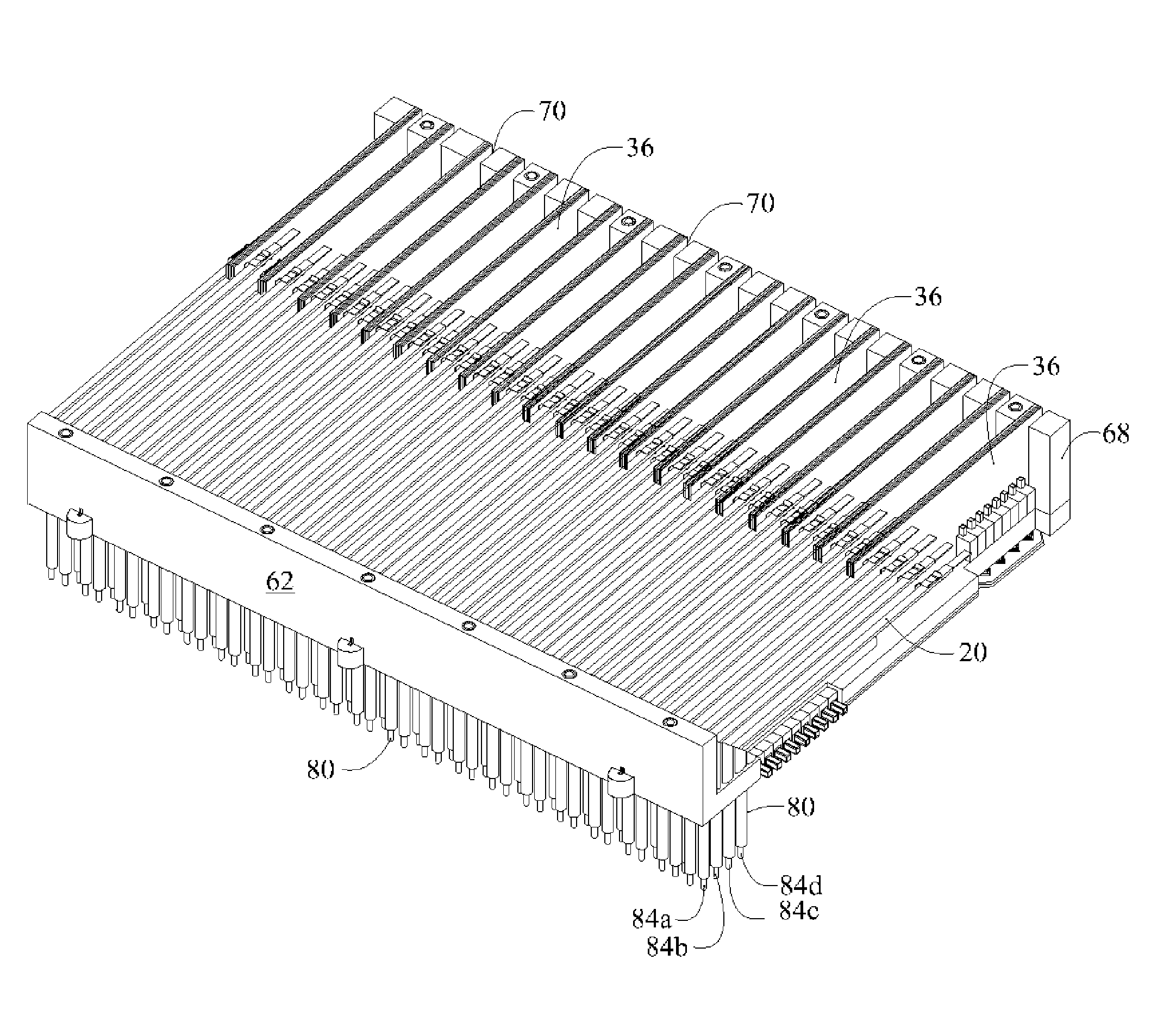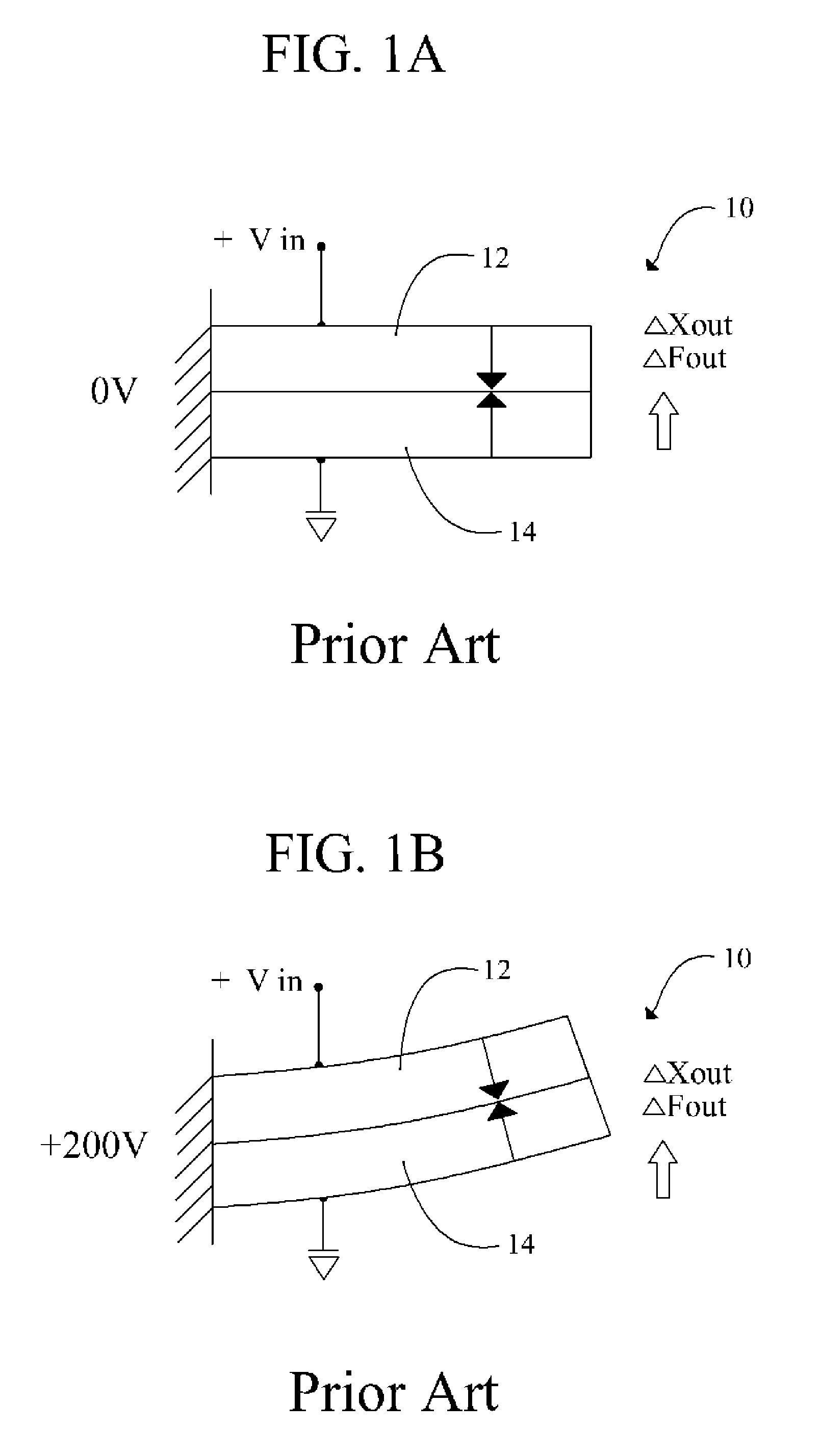Braille cell cap
a cell cap and braille technology, applied in the field of braille readers, can solve the problems of increasing the manufacturing cost of each bimorph reed, rough reading surface, gap between the braille cell and its surrounding enclosure, etc., and achieves the effect of reducing labor requirements, improving utility and reliability, and reducing manufacturing costs
- Summary
- Abstract
- Description
- Claims
- Application Information
AI Technical Summary
Benefits of technology
Problems solved by technology
Method used
Image
Examples
Embodiment Construction
[0072]Referring briefly to FIGS. 1A and 1B, it will there be seen that prior art series x-polled bimorph 10 is excited on only one side of the element. In FIG. 1A, the reference numeral 10 denotes the bimorph when no voltage is applied thereto. A bimorph is made of two strips of conductors that expand longitudinally at different expansion rates when voltage is applied thereto. Accordingly, conductors 12 and 14 share a common length when no voltage is applied thereto as depicted in FIG. 1A.
[0073]In FIG. 1B, 200 volts is applied to prior art bimorph 10. In this particular example, the expansion rate of conductor 14 exceeds that of conductor 12 so that the length of conductor 14 exceeds that of conductor 12 when voltage is applied to conductor 12. Bimorph 10 therefore becomes curved. The amount of curvature increases in direct relation to an increase in applied voltage. No voltage is applied to the central electrode in a series-polled bimorph.
[0074]Turning now to FIGS. 2A and 2B, there...
PUM
 Login to View More
Login to View More Abstract
Description
Claims
Application Information
 Login to View More
Login to View More - R&D
- Intellectual Property
- Life Sciences
- Materials
- Tech Scout
- Unparalleled Data Quality
- Higher Quality Content
- 60% Fewer Hallucinations
Browse by: Latest US Patents, China's latest patents, Technical Efficacy Thesaurus, Application Domain, Technology Topic, Popular Technical Reports.
© 2025 PatSnap. All rights reserved.Legal|Privacy policy|Modern Slavery Act Transparency Statement|Sitemap|About US| Contact US: help@patsnap.com



